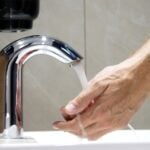
Why Does My Kitchen Sink Keep Getting Clogged?
- By: Amer ZaghloulehClogsComment: 0
Who doesn’t hate clogged kitchen sinks? Because the kitchen sink is, unquestionably, one of the most used sinks in every household, clogging can be irking.
Snaking and plunging is a typical practice to unclog kitchen sinks, and it’s really helpful, but it doesn’t have a significant effect on preventing future clogging.
However, some clogs are minor and seldom repetitive, but the more persistent ones force us to wonder why our kitchen sinks have become a severe pain in the rear.
This article answers that question that, although not rhetorical, often go unanswered.
1. Food remains
In most cases, kitchen sink clogs are caused by food particles. In the pipe system under the sink, food particles washed off plates and down the drain can get stuck. Typically, the P-trap collects these food remains and stores them from entering the more complex drainage network. When these bits of food accumulate in the P-trap, they form a clog and restrict the water’s free flow from the sink.
2. Fats, Oils, and Grease
Generally called lipids, these are a more serious cause of skin clogs. It’s serious because, like cancer, it builds up with time, and it’s unstoppable. The fats and oils you pour on the sink don’t travel down the drainage system entirely. As sticky substances, they adhere to the drainage pipe walls, thickens as more cold water travels down the drain, and builds up with time. These build-ups at several points of the pipeline can cause clogging or total blocking of kitchen sinks.
3. Coffee grounds
This one is a stubborn substance that gets unusually sticky when it comes in contact with water. Imagine what happens to the coffee in your cup when very little water touches it. The grounds immediately absorb water and stick around the walls of the cup. The same thing happens when coffee grounds find their way through the kitchen sink. They stick around the walls of the draining pipes and build up from there.
4. P-trap issues
Underneath the sink, there’s a curved pipe shaped like the letter “P” or, in some cases, the letter “S.” This area of the sink is called the P-trap for no reason beyond its distinctive shape and function.
This part is designed to trap some water to attract sewer gases traveling upward and prevent them from reaching the sink and pouring out irritating smells.
Notwithstanding the good intention behind the creation of the P-trap, it is a serious barrier for heavy particles. Since everything leaving the sink has to travel through the P-trap downward and then upward into the larger drainage system, many heavy particles rarely make the upward journey out of the kitchen.
So, when this builds up, it causes sink clogging and total blockage of the kitchen sink.
These are the main reasons why kitchen sinks get clogged. Discovering early enough that your sink is getting clogged rather too frequently is a good thing. When that happens, you can contact a professional plumber to help you clean up the ducts and restore your kitchen’s shape. At Anytime Plumbing, this and many more is what we do with genuineness and love for your customers.







